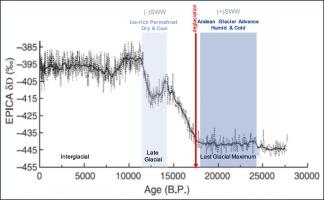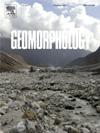Glacial to periglacial transition at the end of the last ice age in the subtropical semiarid Andes
Abstract
Atmospheric warming and circulation reorganization at the end of the last ice age represent the most important climate change of the last 100,000 years and provide an opportunity to uncover how the southern subtropics cryosphere responded to strong changes in the global climate system. Extensive mapping and chronologic records on cryogenic landforms to better understand the association and interactions between glaciers and viscous creep of ice-rich permafrost landforms (rock glaciers) are widely missing in the region. In this paper, we reconstruct the geomorphic imprint of the Last Glacial Maximum (LGM) and the Termination I in the high Andes of the Río Limarí Basin (30–31°S) in the subtropical semiarid Andes of Chile. 74 new 10Be surface exposure dating ages constrain the timing of glaciation, deglaciation, and glacial to periglacial transition. Glacial advances occurred first by 41.2 ± 0.6 – 35.0 ± 0.5 ka during Marine Isotope Stage 3, but probably earlier also; then, a second advance occurred during the global LGM between 24.2 ± 0.4 and 18.6 ± 0.2 ka. Deglaciation by 17.6 ± 0.2 ka left extensive hummocky moraines on the main valleys. Characteristic patterns of furrows and ridges typical of rock glaciers and solifluction superimposed on the LGM hummocky moraine indicate ice-rich permafrost in glacial deposits likely between 15.5 ± 0.3 and 13.6 ± 0.3 ka. We propose that moraines deposited by LGM debris-covered glaciers served as a niche for strong seasonal frost and permafrost creep, which substantially modified the original landforms. Our results contribute to a better understanding of major transformations in an ice-rich high mountain area of the southern hemisphere where the interplay of temperature and precipitation changes drove glacial to periglacial transitions.


 求助内容:
求助内容: 应助结果提醒方式:
应助结果提醒方式:


